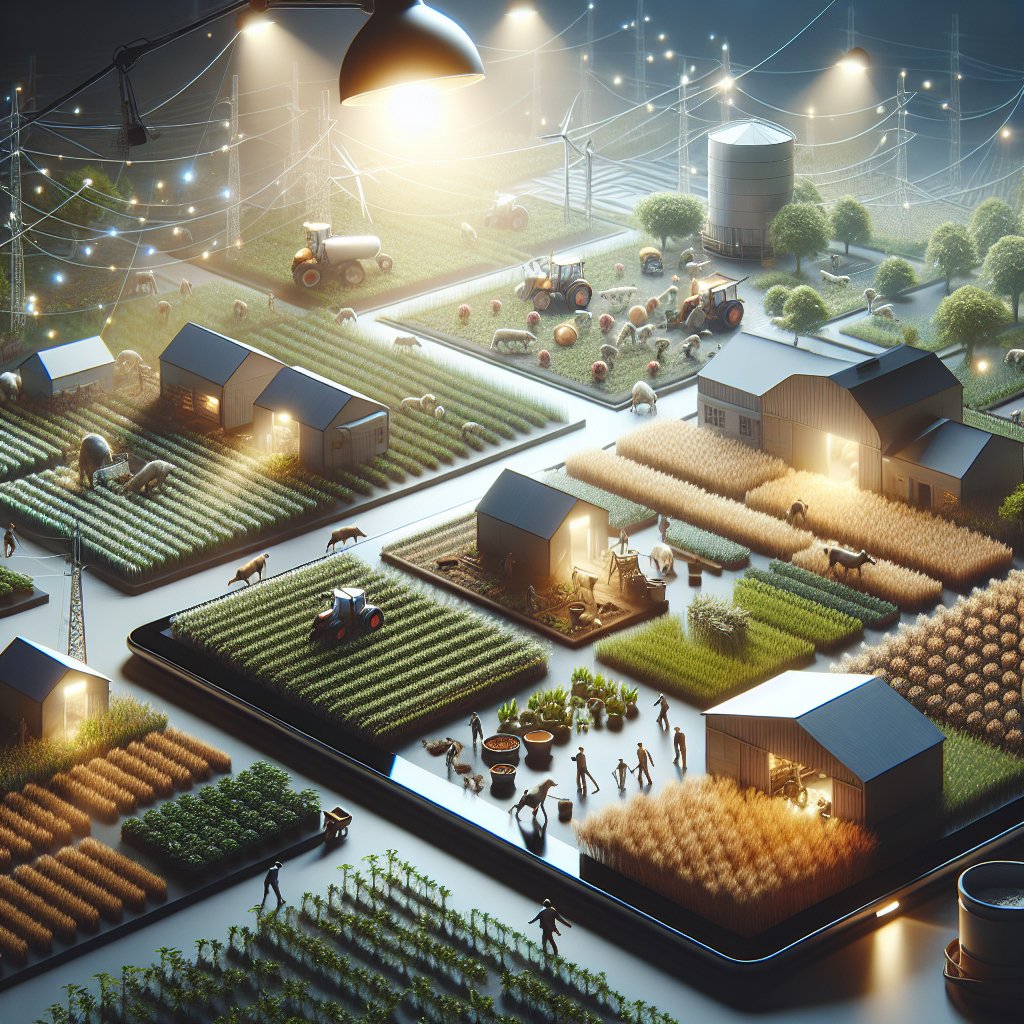
Managing small farms efficiently with minimal labor is a challenge that many modern farmers face. As the agricultural landscape evolves, small-scale farmers must adapt to new methods and technologies to maintain productivity and sustainability. This article explores strategies and practices that can help small farm owners optimize their operations while minimizing labor input.
Understanding the Challenges of Small Farm Management
Small farms are often characterized by limited resources, including land, labor, and capital. These constraints can make it difficult for farmers to achieve economies of scale, which are typically enjoyed by larger agricultural operations. As a result, small farm owners must be strategic in their approach to farm management, focusing on efficiency and innovation to remain competitive.
One of the primary challenges faced by small farms is labor management. With fewer workers available, tasks such as planting, harvesting, and maintenance can become overwhelming, especially during peak seasons. Additionally, the cost of hiring additional labor can be prohibitive, further straining the farm’s financial resources.
Another significant challenge is the need to balance productivity with sustainability. Small farms often rely on traditional farming methods, which may not be as efficient or environmentally friendly as modern techniques. However, transitioning to new practices can require significant investment and training, which may not be feasible for all small farm owners.
Strategies for Efficient Farm Management
To address these challenges, small farm owners can implement a variety of strategies aimed at improving efficiency and reducing labor requirements. These strategies can be broadly categorized into three areas: technology adoption, crop and livestock management, and resource optimization.
Technology Adoption
Embracing technology is one of the most effective ways to enhance farm efficiency. Modern agricultural technologies, such as precision farming tools, automated machinery, and data analytics, can help small farms optimize their operations and reduce labor demands.
- Precision Farming: Precision farming involves using GPS and data analytics to monitor and manage crops with greater accuracy. This technology allows farmers to apply inputs such as water, fertilizers, and pesticides more efficiently, reducing waste and labor.
- Automated Machinery: Investing in automated machinery, such as robotic harvesters and drones, can significantly reduce the need for manual labor. These machines can perform tasks such as planting, weeding, and harvesting with minimal human intervention.
- Data Analytics: Utilizing data analytics tools can help farmers make informed decisions about crop management, resource allocation, and market trends. By analyzing data, farmers can identify areas for improvement and optimize their operations accordingly.
Crop and Livestock Management
Effective crop and livestock management practices can also contribute to increased efficiency on small farms. By selecting the right crops and livestock breeds, implementing sustainable practices, and optimizing production cycles, farmers can maximize their output with minimal labor input.
- Crop Selection: Choosing crops that are well-suited to the local climate and soil conditions can reduce the need for intensive labor and inputs. Additionally, diversifying crop selection can help mitigate risks associated with market fluctuations and environmental challenges.
- Livestock Breeding: Selecting livestock breeds that are resilient and require less maintenance can help reduce labor demands. For example, choosing breeds that are disease-resistant or have lower feed requirements can lead to more efficient livestock management.
- Sustainable Practices: Implementing sustainable farming practices, such as crop rotation, cover cropping, and integrated pest management, can improve soil health and reduce the need for labor-intensive interventions.
Resource Optimization
Optimizing the use of resources, such as water, energy, and inputs, is crucial for efficient farm management. By reducing waste and improving resource allocation, small farms can lower costs and minimize labor requirements.
- Water Management: Implementing efficient irrigation systems, such as drip irrigation or rainwater harvesting, can help conserve water and reduce the labor needed for manual watering.
- Energy Efficiency: Utilizing renewable energy sources, such as solar or wind power, can reduce energy costs and reliance on labor-intensive energy production methods.
- Input Management: Carefully managing inputs, such as fertilizers and pesticides, can reduce waste and labor associated with application. Precision application techniques can further enhance efficiency.
Conclusion
Managing small farms efficiently with minimal labor is a multifaceted challenge that requires a strategic approach. By adopting modern technologies, optimizing crop and livestock management practices, and efficiently utilizing resources, small farm owners can enhance productivity and sustainability. While the transition to more efficient practices may require initial investment and training, the long-term benefits can lead to a more resilient and profitable farming operation. As the agricultural landscape continues to evolve, small farms that embrace innovation and efficiency will be better positioned to thrive in the future.

